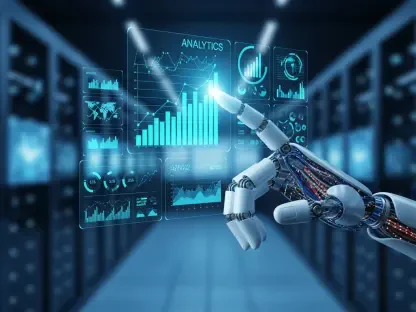Introduction to AI as a Catalyst for Industry Transformation
Imagine a world where space missions operate with flawless autonomy, aircraft designs evolve through intelligent algorithms, and customer interactions are seamlessly automated—such is the transformative power of artificial intelligence (AI) reshaping industries today. AI, at its core, harnesses machine learning, vast data processing capabilities, and automation to enable systems that learn, adapt, and make decisions with minimal human intervention. This technology is not merely a tool but a paradigm shift, driving unprecedented changes across sectors like aerospace, aviation, and software development.
The rapid evolution of AI has positioned it as a cornerstone of innovation, particularly in environments requiring precision and scalability. From optimizing flight paths in aviation to enabling real-time decision-making in space exploration, AI’s integration into these fields is accelerating progress at a remarkable pace. Its ability to process massive datasets and deliver actionable insights is redefining operational benchmarks.
Within the broader technological landscape, AI stands out as a catalyst for efficiency, autonomy, and growth. Its relevance lies in empowering industries to tackle complex challenges, reduce human error, and scale operations in ways previously unimaginable. This review delves into how AI is shaping the present and future of industry transformation.
Core Components and Features of AI Technology
Machine Learning and Real-Time Data Processing
At the heart of AI’s impact is machine learning, a subset that allows systems to analyze data, identify patterns, and make informed decisions in real time. This capability is indispensable in dynamic settings such as space missions, where split-second choices can determine success or failure. In aviation, machine learning optimizes routes and predicts maintenance needs, ensuring smoother operations.
The performance of these systems is often measured by metrics like accuracy, speed, and adaptability, which directly influence operational efficiency. For instance, algorithms that process sensor data during a spacecraft launch must deliver precise outputs under intense conditions. Such reliability translates into cost savings and enhanced safety across industries, proving AI’s practical value.
Beyond raw performance, the ability to handle real-time data empowers industries to stay agile in unpredictable scenarios. Whether it’s adjusting a flight plan mid-journey or monitoring satellite health, machine learning ensures responsiveness, cementing AI as a critical asset in high-stakes environments.
Automation and Autonomous Systems
AI-driven automation is revolutionizing sectors by minimizing manual oversight while maximizing safety and performance. In aerospace, autonomous systems manage complex tasks like navigation and hazard detection during space exploration, reducing risks to human crews. Similarly, in aviation, automation streamlines processes from ticketing to in-flight operations, enhancing the passenger experience.
Real-world applications highlight the breadth of AI’s influence in this domain. Autonomous decision-making tools guide rovers on distant planets, adapting to terrain without earthbound input, while automated customer support systems in aviation resolve queries with efficiency and precision. These implementations showcase AI’s capacity to handle intricate challenges independently.
The broader implication of such automation lies in its ability to redefine user interactions and operational workflows. By delegating routine or hazardous tasks to AI systems, industries can focus human expertise on strategic innovation, thereby elevating overall productivity and safety standards.
Recent Advancements in AI Applications
The integration of AI into industry practices has seen remarkable strides, with trends like edge computing gaining prominence in space technology. Edge computing enables data processing closer to the source, reducing latency and enhancing autonomy in missions far from Earth. This shift is complemented by tailored product strategies that leverage AI to meet evolving consumer demands.
Industry behavior is also transforming, with a marked focus on data-driven economies. Companies are increasingly relying on AI to analyze market trends and customer preferences, fostering more responsive business models. Additionally, scalable web infrastructure is being developed to support AI systems, ensuring they can handle growing data volumes without performance dips.
Emerging innovations, showcased at major tech events this year, further illustrate AI’s trajectory. Sponsor-led discussions at prominent conferences have highlighted breakthroughs in autonomous systems and data integration, pointing to a future where AI’s role in shaping industries becomes even more pronounced. These insights reflect a collective push toward smarter, more adaptive technologies.
Real-World Impact Across Diverse Sectors
AI’s practical applications are vividly demonstrated in aerospace, where it underpins advancements in space infrastructure. From optimizing satellite networks to enabling autonomous mission planning, AI is transforming how space exploration is conducted. Sessions at leading tech gatherings this year have spotlighted startups using AI to address challenges in this domain with innovative solutions.
In aviation, AI enhances safety protocols and streamlines design processes. Intelligent systems now predict potential mechanical issues before they arise, while also personalizing customer support through automation. Such use cases, often highlighted in industry forums, underscore AI’s ability to improve both operational reliability and user satisfaction.
The software development sector also benefits immensely, with AI driving efficiencies in coding, testing, and deployment. By automating repetitive tasks and providing real-time analytics, AI enables developers to focus on creative problem-solving. These transformative effects are reshaping operational paradigms, fostering deeper engagement with end users across all affected industries.
Challenges and Limitations in AI Adoption
Despite its potential, AI adoption faces significant hurdles, particularly in technical scalability. Building systems that can handle vast, diverse datasets without compromising speed remains a complex task. Additionally, regulatory constraints around data privacy and usage pose barriers, especially in industries handling sensitive information.
Market challenges further complicate the landscape, with high implementation costs deterring smaller enterprises from embracing AI. Resistance to change in traditional sectors also slows progress, as stakeholders grapple with integrating new systems into established workflows. These barriers highlight the need for strategic approaches to adoption.
Efforts to address these issues are underway, with collaborative initiatives and policy discussions gaining traction at industry events. Partnerships between tech firms and regulatory bodies aim to create frameworks that balance innovation with ethical considerations. Such endeavors are crucial for ensuring AI’s benefits are realized across a wider spectrum of industries.
Future Outlook for AI-Driven Innovation
Looking ahead, AI technology is poised for breakthroughs in fully autonomous systems that could redefine operational independence. Predictions suggest that within the next few years, from this year to 2027, industries might witness AI systems capable of managing entire missions or production cycles without human input. Such advancements promise to elevate efficiency to new heights.
The long-term impact of AI extends beyond operational gains, potentially reshaping societal structures through smarter economies. Enhanced data integration could lead to more personalized services, while also addressing global challenges like resource allocation. These shifts hint at a future where AI underpins both industrial and everyday experiences.
Forward-looking discussions at major tech platforms this year emphasize the implications of these developments. Anticipated innovations, such as AI-driven predictive models for global logistics, could transform how industries plan and execute. This trajectory underscores the need for continued investment and research to unlock AI’s full potential.
Conclusion: Assessing AI’s Role in Shaping the Future
Reflecting on the journey of AI across industries, it has become evident that its capabilities have already redefined efficiency, safety, and scalability in remarkable ways. The transformative power of machine learning, automation, and real-time data processing stands out as pivotal in driving progress across aerospace, aviation, and software sectors.
Looking back, the challenges of scalability and regulation have posed significant hurdles, yet collaborative efforts showcased at industry events have laid a foundation for overcoming them. The path forward demands a focus on accessible solutions, such as modular AI tools for smaller enterprises, to democratize access to this technology.
Ultimately, the next steps involve fostering global partnerships to address ethical data usage and to develop policies that encourage innovation without compromising trust. Investing in education and training to prepare workforces for an AI-integrated landscape emerges as a critical consideration, ensuring that the momentum of this technological wave carries industries into a sustainable and inclusive future.









